The Mythical Man-Month: Essays on Software Engineering, 20th Anniversary Edition
Frederick P. Brooks
Theclassic book on the human elements of software engineering. Software tools and development environments may have changed in the 21 years since the first edition of this book, but the peculiarly nonlinear economies of scale in collaborative work and the nature of individuals and groups has not changed an epsilon. If you write code or depend upon those who do, get this book as soon as possible — from Amazon.com Books, your library, or anyone else. You (and/or your colleagues) will be forever grateful. Very Highest Recommendation.
0201835959
World War Z: An Oral History of the Zombie War
Max Brooks
“The end was near.” —Voices from the Zombie War
The Zombie War came unthinkably close to eradicating humanity. Max Brooks, driven by the urgency of preserving the acid-etched first-hand experiences of the survivors from those apocalyptic years, traveled across the United States of America and throughout the world, from decimated cities that once teemed with upwards of thirty million souls to the most remote and inhospitable areas of the planet. He recorded the testimony of men, women, and sometimes children who came face-to-face with the living, or at least the undead, hell of that dreadful time. World War Z is the result. Never before have we had access to a document that so powerfully conveys the depth of fear and horror, and also the ineradicable spirit of resistance, that gripped human society through the plague years.
Ranging from the now infamous village of New Dachang in the United Federation of China, where the epidemiological trail began with the twelve-year-old Patient Zero, to the unnamed northern forests where untold numbers sought a terrible and temporary refuge in the cold, to the United States of Southern Africa, where the Redeker Plan provided hope for humanity at an unspeakable price, to the west-of-the-Rockies redoubt where the North American tide finally started to turn, this invaluable chronicle reflects the full scope and duration of the Zombie War.
Most of all, the book captures with haunting immediacy the human dimension of this epochal event. Facing the often raw and vivid nature of these personal accounts requires a degree of courage on the part of the reader, but the effort is invaluable because, as Mr. Brooks says in his introduction, “By excluding the human factor, aren’t we risking the kind of personal detachment from history that may, heaven forbid, lead us one day to repeat it? And in the end, isn’t the human factor the only true difference between us and the enemy we now refer to as ‘the living dead’?”
Note: Some of the numerical and factual material contained in this edition was previously published under the auspices of the United Nations Postwar Commission.
Eyewitness reports from the first truly global war
“I found ‘Patient Zero’ behind the locked door of an abandoned apartment across town. . . . His wrists and feet were bound with plastic packing twine. Although he’d rubbed off the skin around his bonds, there was no blood. There was also no blood on his other wounds. . . . He was writhing like an animal; a gag muffled his growls. At first the villagers tried to hold me back. They warned me not to touch him, that he was ‘cursed.’ I shrugged them off and reached for my mask and gloves. The boy’s skin was . . . cold and gray . . . I could find neither his heartbeat nor his pulse.” —Dr. Kwang Jingshu, Greater Chongqing, United Federation of China
“‘Shock and Awe’? Perfect name. . . . But what if the enemy can’t be shocked and awed? Not just won’t, but biologically can’t! That’s what happened that day outside New York City, that’s the failure that almost lost us the whole damn war. The fact that we couldn’t shock and awe Zack boomeranged right back in our faces and actually allowed Zack to shock and awe us! They’re not afraid! No matter what we do, no matter how many we kill, they will never, ever be afraid!” —Todd Wainio, former U.S. Army infantryman and veteran of the Battle of Yonkers
“Two hundred million zombies. Who can even visualize that type of number, let alone combat it? . . . For the first time in history, we faced an enemy that was actively waging total war. They had no limits of endurance. They would never negotiate, never surrender. They would fight until the very end because, unlike us, every single one of them, every second of every day, was devoted to consuming all life on Earth.” —General Travis D’Ambrosia, Supreme Allied Commander, Europe
From the Hardcover edition.
0307346617
The Greens Cookbook : Extraordinary Vegetarian Cuisine From The Celebrated Restaurant
DEBORAH MADISON EDWARD ESPE BROWN
Packed with recipes from the boldly original and highly successful Greens Restaurant in San Francisco that regularly please vegetarians and non-vegetarians alike, Greensis this cook's personal favorite cookbook. From New Potato and Grilled Pepper Pizza to Zuni Stew, these recipes are consistently innovative and delicious. —MTB
"I consider Greens to be the ultimate vegetarian restaurant. The cuisine is elegant, inspiring, and astonishingly creative. Many of us have long awaited this major event in cookbook publishing. Congratulations!" —Mollie Katzen, Moosewood Cookbook
0553051954
Computer Security: Principles and Practice
William Stallings Lawrie Brown
In recent years, the need for education in computer security and related topics has grown dramatically – and is essential for anyone in the fields of Computer Science or Computer Engineering. This is the only book available that provides integrated, comprehensive, up-to-date coverage of the broad range of topics in this subject.
Comprehensive treatment of user authentication and access control. Unified approach to intrusion detection and firewalls, giving readers a solid understanding of the threats and countermeasures. More detailed coverage of software security than other books. Exploration of management issues. Systematic, comprehensive discussion of malicious software and denial of service attacks. Coverage of Linux and Windows Vista. Up-to-date coverage of database security. Thorough overview of cryptography, authentication, and digital signatures. Coverage of Internet security. For system engineers, programmers, system managers, network managers, product marketing personnel, system support specialists; a solid, up-to-date reference or tutorial for self-study.
0136004245
Close Encounters of the Fourth Kind: A Reporter's Notebook on Alien Abuduction, Ufos, and the Conference at M.I.T.
C. D. B. Bryan
Inspired perhaps by this summer's blockbuster film adaptation of Carl Sagan's Contact, a handful of nonfiction works have been reissued, all of which explore the possibility that we are not alone. C.D.B. Bryan's Close Encounters of the Fourth Kind—an engrossing work written for those skeptical about extraterrestrial visitors—is a compilation of testimonials and interviews about alien abductions. Bryan's sources, interviewed at a five-day academic conference held at M.I.T., include psychiatrists, researchers, science writers, "ufologists," and abductees, including John Mack, a professor of psychiatry at Harvard and author of Abduction: Human Encounters with Aliens. In addition, Close Encounters includes transcripts from hypnotherapy sessions with self-described "abductees." Bryan, journalist and author of Friendly Fire (1976), blends a reporter's objectivity with great compassion for the traumatized victims of these mysterious and horrific violations.
0140195270
|
Tournament of Shadows : The Great Game and the Race for Empire in Central Asia (A Cornelia and Michael Bessie Book)
Karl E. Meyer Meyer Shareen Blair Brysac
Throughout the 19th century and well into the 20th, the Russian and British Empires played out a chess game of diplomacy, espionage, and military thrusts into Central Asia to protect their expanding interests. When play began, the frontiers of their empires lay 2,000 miles apart, across vast deserts and almost impassable mountain ranges; by the end, they were separated by only 20 miles. Karl E. Meyer of The New York Timesand Shareen Blair Brysac, documentary filmmaker for CBS, update and significantly expand earlier studies of the imperial rivalry, notably Peter Hopkirk's pioneering The Great Game. Tournament of Shadowsreads like a racy adventure story, yet there is no need for the authors to embellish their well-researched facts. The region attracted a host of bizarre characters, each with his own idiosyncratic goals. The authors begin with the journey to Bokhara of an ambitious horse doctor, hired by the East India Company in 1806 to improve its breeding stock, and end with the CIA's assistance to anti-Chinese guerrillas in Tibet during the cold war. American participants in the opening of Central Asia have not previously received much attention, but Tournament of Shadowsintroduces adventurers such as William Rockhill, commissioned by the Smithsonian Institution in the 1880s to explore Tibet, and William McGovern, who, to the chagrin of the British, reached Lhasa in 1923. The wealth and instability of Central Asia continue to keep the region in the headlines, motivating the Soviet Union's disastrous 10-year intervention in Afghanistan and fueling an international race for resources—especially oil—today. —John Stevenson
1582430284
Notes from a Big Country
Bill Bryson
Here's a fact for you. According to the latest "Abstract of the UnitedStates", every year more than 400,00 Americans suffer injuries involving beds,mattresses or pillows...That is more people than live in greater Coventry. That is almost 2,000 bed, mattress orpillow injuries a day. In the time it takes you to read this article, four Americans will somehow manage tobe wounded by their bedding.
Fans of Bill Bryson will know by now that this isthe kind of completely useless information that gets him excited. In fact, you are unlikely to read anyone else who derivesquite so much pleasure from meaningless statistics. If those statistics are about the USA (Bryson's homeland) or his adoptedEngland—or even better, comparing one to the other—then he is in heaven. And it is not only the uselessness of theinformation that interests him, but also the fact that Americans spend millions of dollars and hours each yearcollecting such data together.
Though not a match for his earlier success of Notesfrom a Small Island, Notes from a Big Country takes a good second place. It collects together more than 18 monthsworth of Mail on Sunday columns which Bryson wrote between October 1996 and May 1998 after he and his English wife andchildren returned to the US and settled in New England. The only thing that outshines his amazement—and sometimes,outright dismay—at the way American society has changed while he's been away, is his English-born family's instantembracing of transatlantic culture.
A word of warning: reading Bill Bryson is not aspectator sport...you are invited— in fact, compelled—to marvel at how the nation that "has the largest economy, the mostcomfortably off people, the best research facilities, many of the finest universities and think-tanks, and more NobelPrize winners than the rest of the world put together" could be the same nation where "13 per cent of women cannot say whether they wear their tights under their knickers or over them. That's something like 12 million women walkingaround in a state of chronic foundation garment uncertainty." This is Bryson at his best, and though not every column inchhits the heady heights of underwear distribution, there are enough laugh-out-loud moments to keep you satisfied.
Detractors of Bryson's work complain all his booksare the same, yet dedicated followers cite that very uniformity of style and subject as the reason they return, book after book. Anyone disappointed by A Walk in the Woods (Bryson's account of hiking the Appalachian Trail and not his best book) will have their faith restored by Notes from a Big Country—here Bryson returns to his favourite subject and the simple, journalistic prose that makes his wacky facts and observations instantly accessible.
Bryson does not pretend to deliver an intellectual treatise on the state of mankind; instead he offers one man's take on how humanity lurches from one day to another—ironically through the kinds of details he mocks others for collecting—Lucie Naylor
0552997862
Lighting Photo Workshop
Chris Bucher
A rigorous practical guide to photographic lighting techniques, complete with hands-on assignments
Offering digital photographers a complete course in photographic lighting, this book covers everything from using flash systems and studio lights to working outdoors in bright or low-light conditions. Full-color examples show how the right lighting can enhance color, improve contrast, and open the door to new creative possibilities.
0470114339
Heat: An Amateur's Adventures as Kitchen Slave, Line Cook, Pasta-Maker, and Apprentice to a Dante-Quoting Butcher in Tuscany
Bill Buford
Bill Buford—author of the highly acclaimed best-selling Among the Thugs—had long thought of himself as a reasonably comfortable cook when in 2002 he finally decided to answer a question that had nagged him every time he prepared a meal: What kind of cook could he be if he worked in a professional kitchen? When the opportunity arose to train in the kitchen of Mario Batali’s three-star New York restaurant, Babbo, Buford grabbed it. Heat is the chronicle—sharp, funny, wonderfully exuberant—of his time spent as Batali’s “slave” and of his far-flung apprenticeships with culinary masters in Italy.
In a fast-paced, candid narrative, Buford describes the frenetic experience of working in Babbo’s kitchen: the trials and errors (and more errors), humiliations and hopes, disappointments and triumphs as he worked his way up the ladder from slave to cook. He talks about his relationships with his kitchen colleagues and with the larger-than-life, hard-living Batali, whose story he learns as their friendship grows through (and sometimes despite) kitchen encounters and after-work all-nighters.
Buford takes us to the restaurant in a remote Appennine village where Batali first apprenticed in Italy and where Buford learns the intricacies of handmade pasta . . . the hill town in Chianti where he is tutored in the art of butchery by Italy’s most famous butcher, a man who insists that his meat is an expression of the Italian soul . . . to London, where he is instructed in the preparation of game by Marco Pierre White, one of England’s most celebrated (or perhaps notorious) chefs. And throughout, we follow the thread of Buford’s fascinating reflections on food as a bearer of culture, on the history and development of a few special dishes (Is the shape of tortellini really based on a woman’s navel? And just what is a short rib?), and on the what and why of the foods we eat today.
Heat is a marvelous hybrid: a richly evocative memoir of Buford’s kitchen adventure, the story of Batali’s amazing rise to culinary (and extra-culinary) fame, a dazzling behind-the-scenes look at the workings of a famous restaurant, and an illuminating exploration of why food matters.
It is a book to delight in—and to savor.
1400041201
|
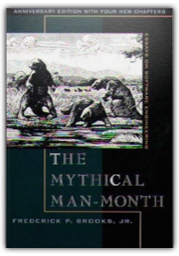
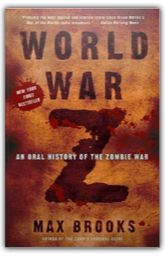

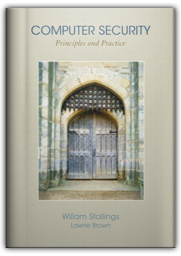
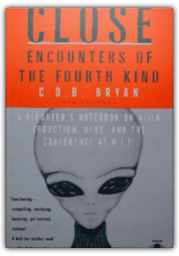

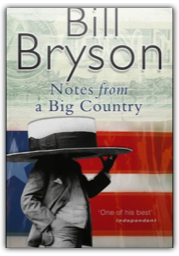
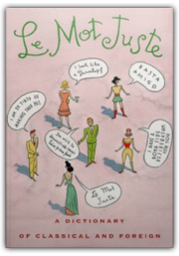
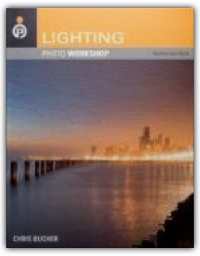
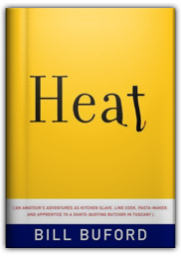

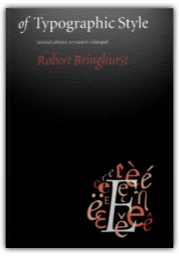


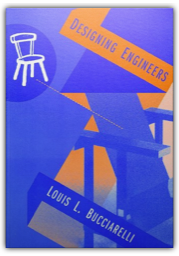

 Made with Delicious Library
Made with Delicious Library